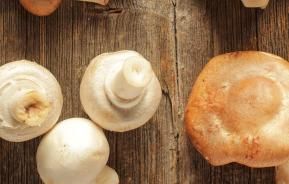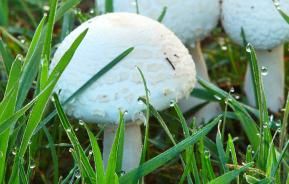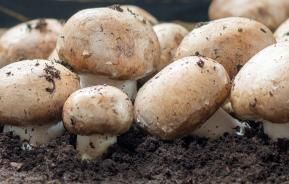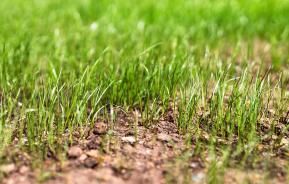As Autumn takes hold and the weather changes, an almost magical eruption starts to occur in the wild and in our gardens. Toadstools and mushrooms start bursting through the soil and making their appearance.
Mushroom foraging becomes a big weekend pastime at this time of year, with scores of people rummaging around in woodlands and forests on the look-out for some tasty additions to the cooking pot.
Edible fungi
If you know where to go, where to look and the types of habitats edible mushrooms grow in, you can discover some fabulous, delicious edible mushrooms. OK, you’re unlikely to find truffles, unless you have access to a tame truffle pig, but there are lots of equally delicious ones.
There’s very little that can beat the delight of finding a beefsteak fungus, boletus, cep, chanterelle or morel - apart from actually cooking and eating them - but even common or giant puffballs and shaggy ink caps are delicious lightly fried, possibly with some lemon juice and a little garlic.
Watch out - they’re poisonous!
But I’m sure I don’t need to tell you that, as well as those tasty edible mushrooms, there are lots that can give you a serious stomach ache and other medical problems and some are deadly poisonous - so you must pick with care.
Obvious examples of poisonous toadstools include death cap (Amanita phalloides), destroying angel (Amanita virosa), fly agaric (Amanita muscaria), fool’s funnel (Clitocybe rivulosa), panther cap (Amanita pantherina) and yellow-stainer (Agaricus xanthodermus).
It is essential that you know exactly what you’re picking if you intend to eat it. At the very least you should arm yourself with a good field guide to ensure you make the correct identification. Collins Complete Guide To British Mushrooms & Toadstools (ISBN 9780007232246) is very good. You should even consider going on a day course with someone who knows what they’re doing, and there’s lots of advice on the web.
The WildFoodUK website has some useful information on identification, and runs Foraging Courses. Alternatively, visit The Mushroom Diary website.
Toadstools in the garden
We get a lot of enquiries from gardeners and home owners worried about all manner of toadstools growing up in their lawns, beds and borders and whether they will do any harm to their plants.
The vast majority of them are harmless to plants - and are, in fact, vital for a healthy garden. Mushrooms and toadstools are nature’s natural recyclers - they break down organic matter in the soil into humus and other materials that are essential for a healthy soil and so healthy plant growth. If they weren’t there your garden would just be a big pile of slowly rotting leaves and stems! Usually, they will be feeding on compost, manure or other materials you’ve added to the soil, or they will be breaking down the roots of otherwise dead trees and shrubs.
If you are at all worried about them, brush them away with a stiff broom as soon as you see them and before the caps open to release their spores.
There is one major toadstool that you should be weary of - honey fungus. Although this does attack dead trees and shrubs and tree stumps, it can also attack some living plants, weakening them and finally killing them. So, it’s definitely not something you want in the garden.








